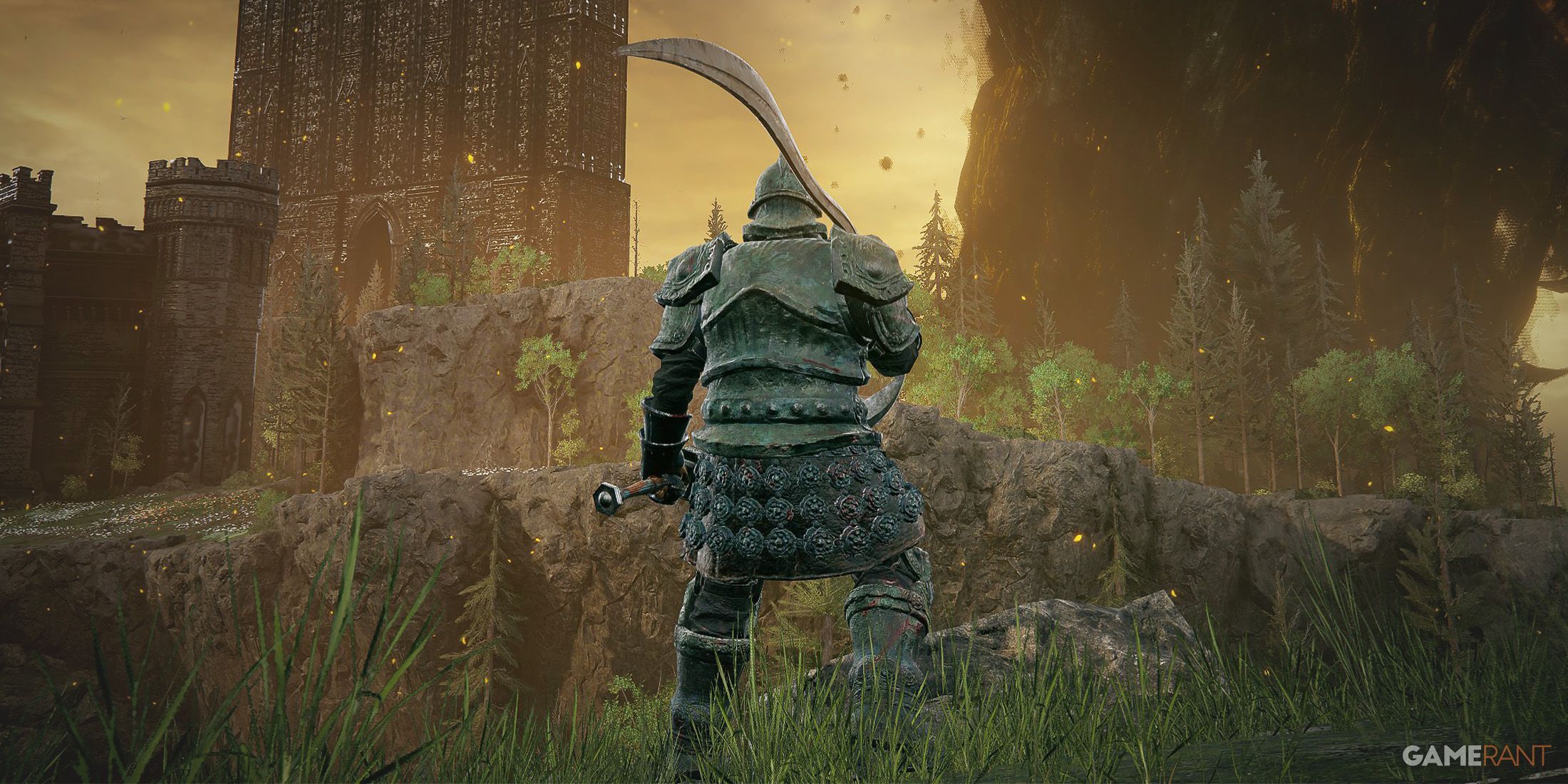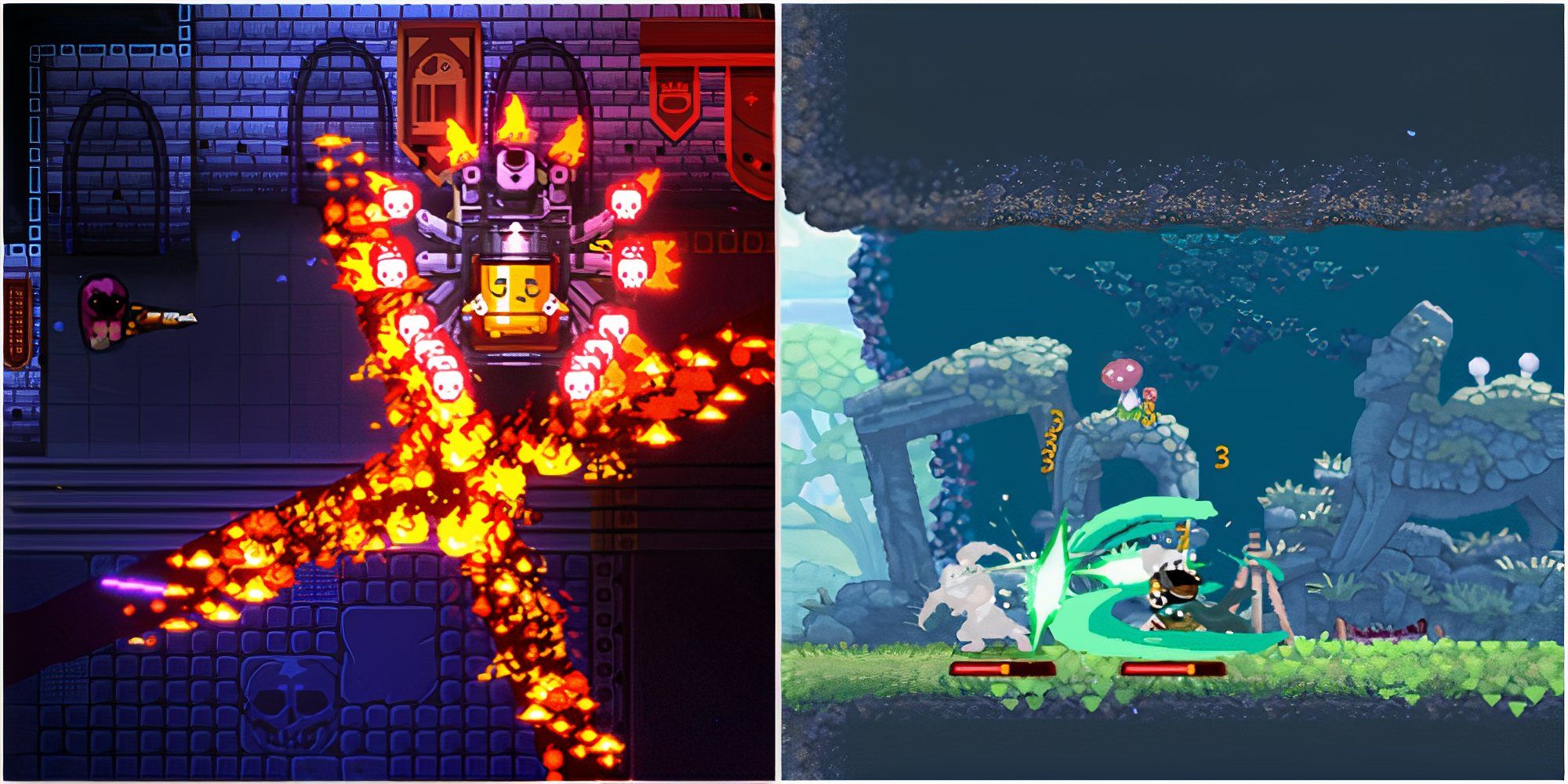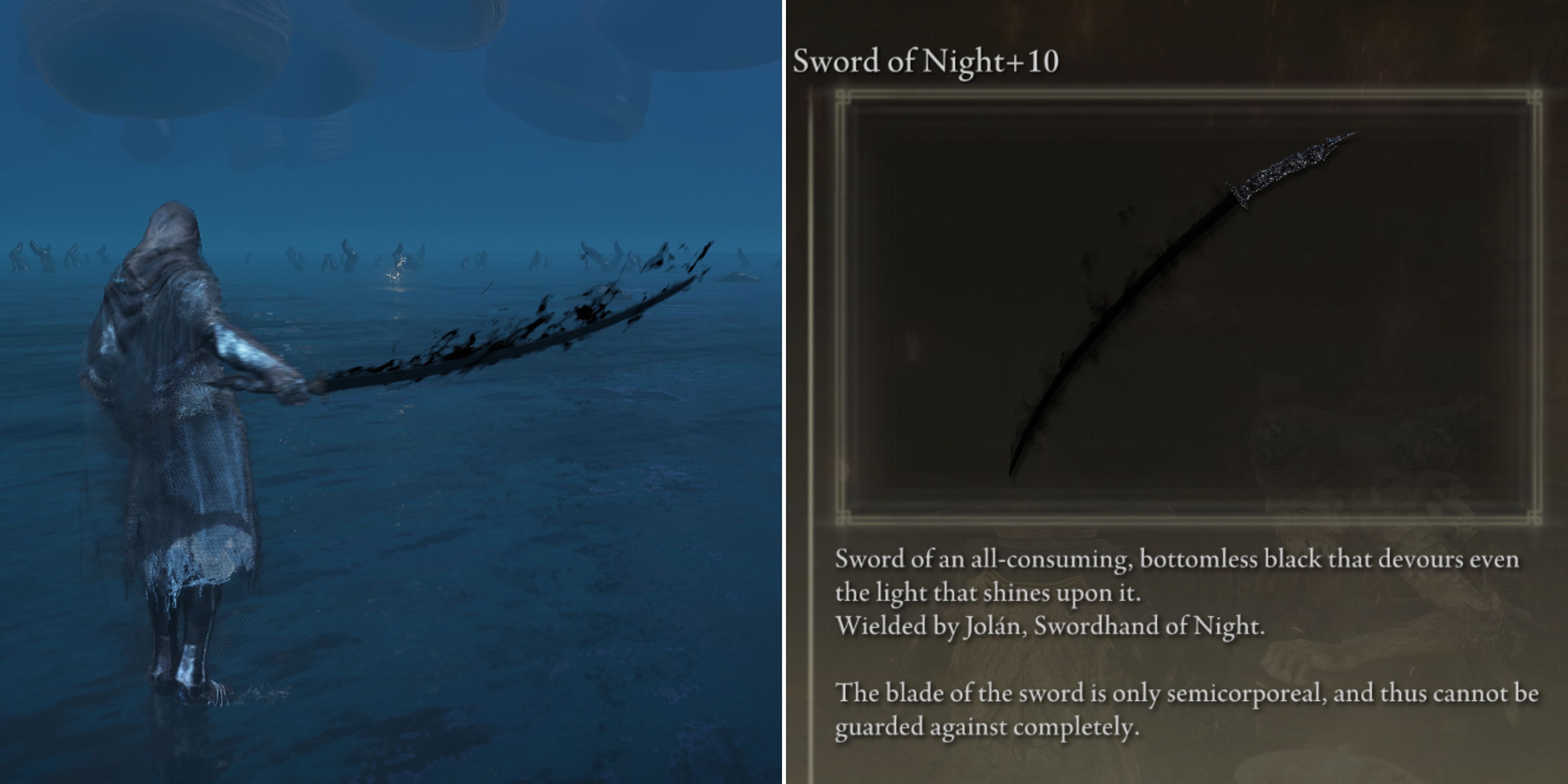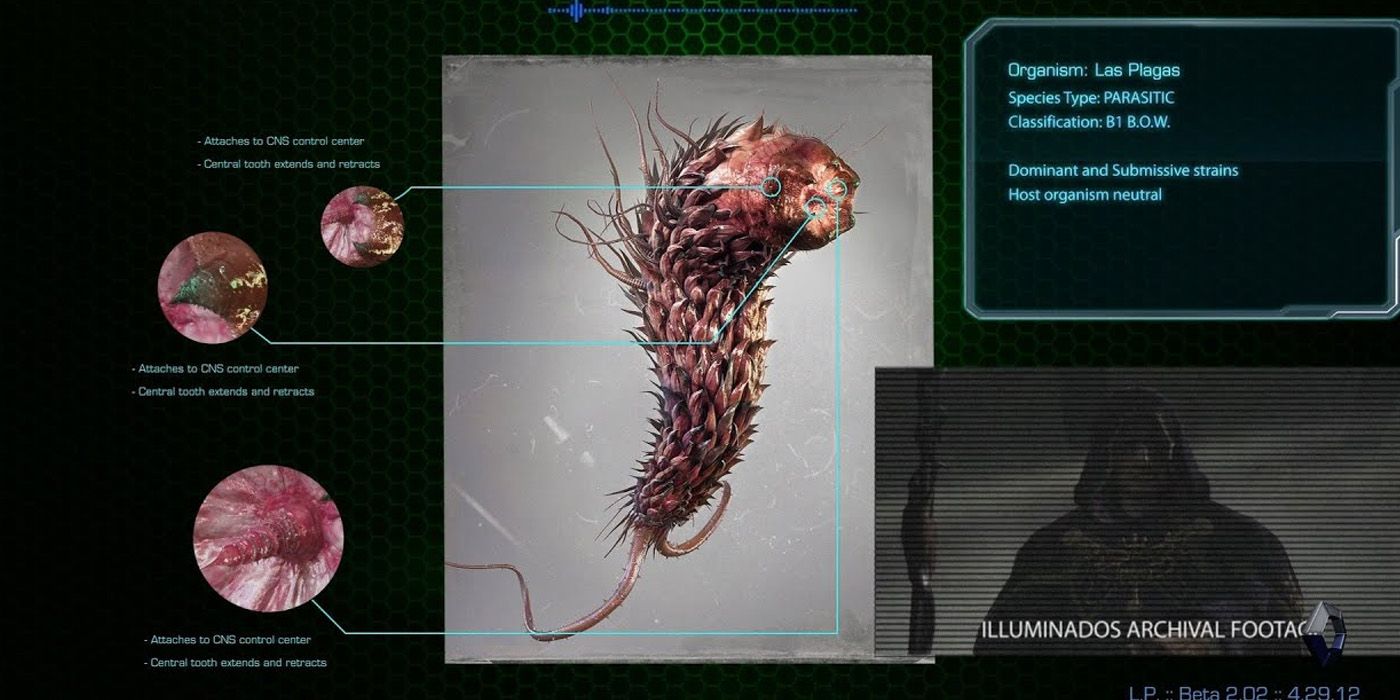Resident Evil 4 remains one of the most popular games in the Resident Evil franchise, despite marking a departure from its predecessors in a number of ways including gameplay and story. While main character Leon S. Kennedy was a returning protagonist from earlier in the series, the events of RE4 existed mostly outside of the core story about the evil corporation Umbrella. Another big departure from the formula for Capcom up to that point was the inclusion of a new parasite responsible for the monstrous mutations in Resident Evil 4, the Las Plagas.
Meaning "the plague" in Spanish, the Las Plagas were at the time a radical change in direction for the tried-and-true formula of players battling against both people turned into zombies and creatures mutated beyond recognition by the T-Virus. Umbrella's bioweapon manufacturing was fueled by using the T-Virus to manipulate DNA and its release into the populace of Raccoon City spurred the events of the first three Resident Evil Games. RE4's extended development cycle helped give a lot of time to build hype for the horror game, and many fans believe it delivered. The Las Plagas were important to this success and have since become less odd of a choice for Capcom.
Fear Grounded In Reality
One of the scariest things about the Las Plagas in RE4 for many players was the parasite's basis in reality. Throughout the game, players can uncover research notes from Dr. Luis Sera that draws comparisons between the Las Plagas parasites and the real-life ophiocordyceps unilateralis. This fungus infects insects and arachnids and overrides their basic survival instincts helping the fungus reach the higher predators it seeks to infect.
The Las Plagas parasites were developed by Osmund Saddler from preexisting samples he had obtained from his predecessors as a way to infect humans and create monsters like the horrific Novistadors. These giant cricket-like creatures operate in a hive mind and are some of the most fearsome enemies in the game, and as the Resident Evil parasites continued to evolve, Saddler and his organization are able to create even more grotesque monsters.
Unlike the T-Virus, which was propagated either as an airborne pathogen or transmitted via bites from an infected individual, humans are implanted with an egg from which the Las Plagas sprouts and begins to take over its host. These infected individuals, called the Ganados by Saddler and his cronies, operate in a somewhat hive mind way and obey orders from Saddler or his subordinates.
Even as one of the most skilled protagonists in the Resident Evil franchise, Leon finds himself in trouble when facing hordes of the Ganados. One of the biggest surprises for players in RE4 is the first time a Las Plagas erupts from its host after a well-placed headshot, and the parasite lashes out with sharp blades while steering its host body (which, while terrifying, was not based in reality).
Not So Odd Anymore
RE4 was originally designed to be a departure from the rest of the series, but recently Capcom has slightly "retconned" the story of RE3 to state that Nemesis was created by the European branch of Umbrella. Umbrella Europe gained access to the Las Plagas parasites and mutated it into what became known as the Nemesis Alpha parasite, and after infecting a T-103 model Tyrant, the already huge and grotesque bioweapon from the original Resident Evil, Nemesis was born.
Many fans have interpreted this retcon as a hint towards the possibility of remake of Resident Evil 4. If Capcom is indeed planning a remake of RE4, the new origins of Nemesis and Umbrella's early attainment of the Las Plagas will need to be fit retroactively into the existing narrative, making the parasite less of an oddity in the line of RE viruses, plagues, and the like.
Resident Evil 4 is available for PC, PS4, Switch, and Xbox One.






